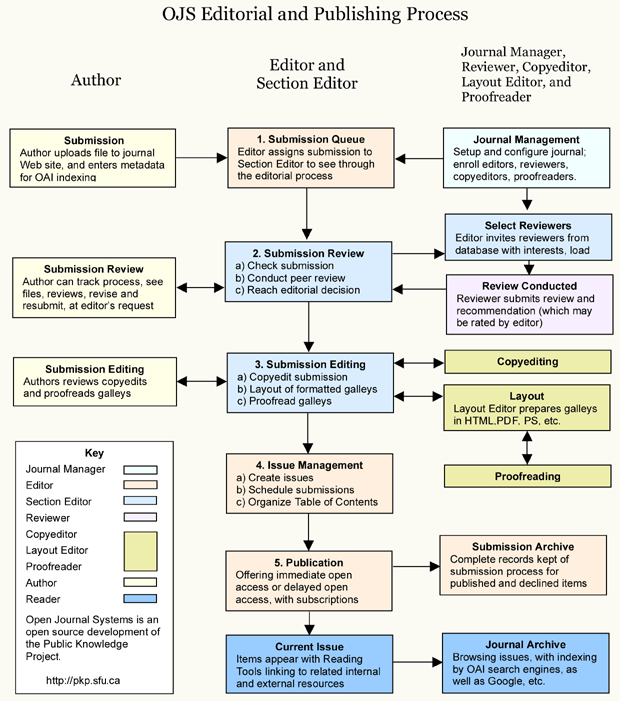PEER-REVIEW PROCESS
This journal uses double-blind external peer-review, which means that the reviewers of the paper won’t get to know the identity of the author(s), and the author(s) won’t get to know the identity of the reviewer. The idea is that everyone should get a similar and unbiased review.
Duties and Responsibilities of Editors
(http://publicationethics.org/files/Code_of_conduct_for_journal_editors_Mar11.pdf)
- The Editors of the journal should have the full authority to reject/accept a manuscript.
- The Editors of the journal should maintain the confidentiality of submitted manuscripts under review or until they are published.
- The Editor-in-Chief should take a decision on submitted manuscripts, whether to be published or not with other editors and reviewers
- The Editors of the journal should preserve the anonymity of reviewers.
- The Editors of the journal should disclose and try to avoid any conflict of interest.
- The Editors of the journal should maintain academic integrity and strive to meet the needs of readers and authors.
- The Editors of the journal should be willing to investigate plagiarism and fraudulent data issues and willing to publish corrections, clarifications, retractions, and apologies when needed.
- The Editors of the journal should limit themselves only to the intellectual content.
- The Editors of the journal must not disclose any information about submitted manuscripts to anyone other than the corresponding author, reviewers, potential reviewers, other editorial advisers, and the publisher, as appropriate.
- Unpublished materials disclosed in a submitted paper will not be used by the editor or the members of the editorial board for their own research purposes without the author's explicit written consent.
- Section editors (SEs) play a key role in peer-reviewed publishing, supporting the journal editor as subject experts on various topics. SEs oversee assigned manuscripts, moving these papers through review and revision. SEs are responsible for assessing manuscript quality, obtaining peer reviews, requesting revisions where appropriate, and making recommendations to the journal editor about the acceptance or rejection of a manuscript.
Duties and Responsibilities of Reviewers
(http://publicationethics.org/files/u7140/Peer%20review%20guidelines.pdf)
If IJIBM Editor has invited you to review a manuscript, please consider the following items:
- Reviewing manuscript critically but constructively and preparing detailed comments about the manuscript to help authors improve their research;
- Reviewing multiple versions of a manuscript as necessary;
- Providing all required information within established deadlines;
- Making recommendations to the editor regarding the suitability of the manuscript for publication in the journal;
- Declaring to the editor any potential conflicts of interest with respect to the authors or the content of a manuscript they are asked to review;
- Reporting possible research misconducts;
- Suggesting alternative reviewers in case they cannot review the manuscript for any reasons;
- Treating the manuscript as a confidential document;
- Not making any use of the work described in the manuscript;
- Not communicating directly with authors, if somehow they identify the authors;
- Not identifying themselves to authors;
- Not passing on the assigned manuscript to another reviewer;
- Ensuring that the manuscript is of high quality and original research;
- Informing the editor if he/she finds the assigned manuscript is under consideration in any other publication to his/her knowledge;
- Writing a review report in English only;
- Authoring a commentary for publication related to the reviewed manuscript.
What should be checked while reviewing a manuscript?
- Novelty;
- Originality;
- Scientific reliability;
- A valuable contribution to science;
- Adding new aspects to the existed field of study;
- Ethical aspects;
- Structure of the article submitted and its relevance to authors’ guidelines;
- References provided to substantiate the content;
- Grammar, punctuation, and spelling;
- Scientific misconduct.
The detailed Journal peer review process is based on the following chart:
